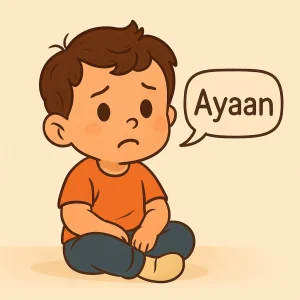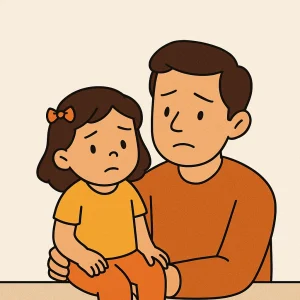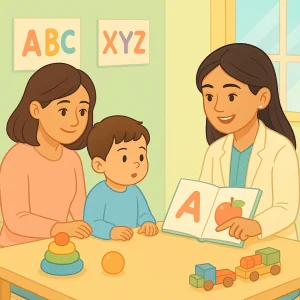W-Sitting in Kids: Should Parents Be Concerned?
Last Updated: August 6, 2024
As parents, we’ve all watched our children move through various stages of growth, each bringing its own set of milestones and quirky habits. Among these, the way a child sits might seem trivial at first glance, but it’s actually an important aspect of their developmental journey. From the classic cross-legged posture at story times to those moments sprawled out on the floor with toys scattered around, each sitting position offers a glimpse into the child’s physical development and comfort levels.
One sitting style you might have noticed is the W position—a distinct and notable way some children sit while playing or resting. Have you ever seen your child sitting with their knees bent and feet splayed out to either side, forming a W-shape with their legs? It’s quite common and, for many kids, just another comfortable way to sit on the floor.
Boost Your Child’s Skills from Home – Explore Trusted Resources Today!
What is W Sitting?
Have you ever noticed children sitting with their knees bent and feet positioned on either side, forming a distinct ‘W’ shape with their legs? This is commonly known as W sitting, a term that describes the way some children prefer to sit on the floor during activities like playing or resting.
Physical Appearance from a Top View:
When viewed from above, W sitting can be easily recognized by the outline of the legs. The knees are spread wide and bent, while the feet are placed out to the sides, pointing away from the body. This configuration resembles the letter ‘W’—hence the name.
Why Do Children Choose This Position?
Children might naturally gravitate towards W sitting for several reasons:
- Stability: This position offers a wide base of support. For many children, it feels more stable, allowing them to play with toys in front of them without needing to focus on maintaining balance.
- Flexibility: Young children are generally more flexible than adults. W sitting allows them to make full use of this flexibility, especially in the hips and legs.
- Concentration: With stability taken care of, children can focus better on the activities at hand, whether they are coloring, building with blocks, or playing with dolls and action figures.
Understanding why and how children sit this way is crucial for parents and caregivers. It helps us observe our children’s development with a knowledgeable eye and support them in their journey. At Wellness Hub, we believe in empowering parents with information to make informed decisions about their child’s health and development. As we explore the implications of W sitting further, remember, knowledge is the key to nurturing.
The Concerns with W Sitting
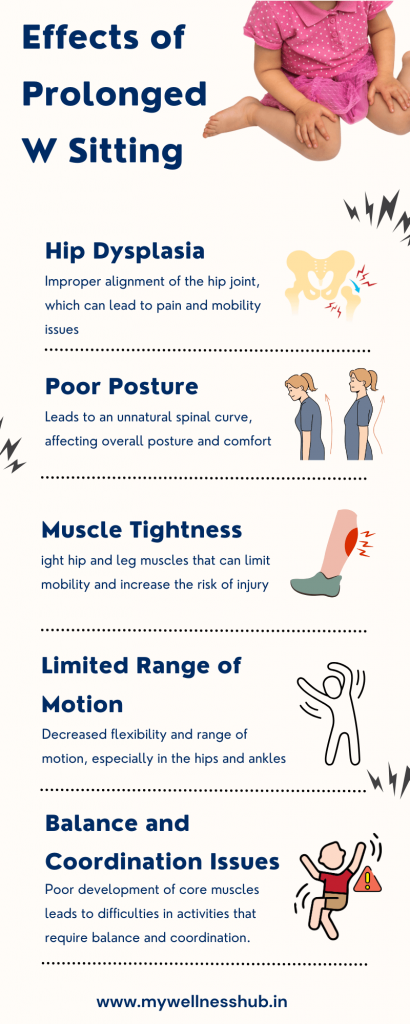
While W sitting is a common and often comfortable position for many children, it’s important for parents and caregivers to be aware of some concerns associated with this posture, especially when it’s used excessively. Prolonged W sitting can have implications for a child’s physical development, affecting everything from hip alignment to core strength. Let’s delve into these potential issues and what the experts say.
Hip and Leg Development Concerns:
One of the primary worries about W sitting is its impact on the developing joints and bones of young children. In this position, the hips are internally rotated and can lead to undue stress on the hip joints. Over time, this may contribute to orthopedic problems such as hip dysplasia, a condition where the hip socket does not fully cover the ball portion of the upper thigh bone. This misalignment can lead to pain and issues with walking.
Effects on Trunk and Core Muscle Strength:
When children sit in a W position, they are provided with a wide base of support. While this might seem beneficial as it stabilizes them without much effort, it actually allows them to avoid using their core muscles to maintain balance. Over reliance on this sitting style can lead to underdeveloped core muscles, which are crucial for other motor skills like standing and walking.
Potential Risks for Orthopedic Problems:
Continued use of the W sitting position may also lead to tighter leg muscles, which can affect a child’s gait and overall posture. Conditions like tibial torsion, where the shinbone twists inward, can arise, making it difficult for a child to walk normally.
Insights from Studies and Expert Opinions:
Research and expert opinions shed further light on the potential drawbacks of W sitting. For instance, a study highlighted in the Journal of Pediatric Health Care found that children who frequently W-sit are more likely to develop orthopedic complications as they grow. Pediatric physical therapists often suggest that encouraging a variety of sitting positions can help promote more balanced muscular development and reduce the risk of orthopedic issues.
As a parent, it’s beneficial to keep a watchful eye on how your child sits during play. Encouraging movement and a variety of positions can help support their overall development. At Wellness Hub, we understand the intricacies of these developmental stages and are here to support you with resources that empower you to nurture your child’s growth effectively. For more information on child development and how you can help at home, check out our comprehensive guides here.
When Is W Sitting a Problem?
It’s common to see children shifting into various sitting positions throughout the day, including the W sitting position. While this is generally a normal part of growing up, especially in very flexible young children, there are certain signs that might indicate this particular sitting style is turning into a problem.
Understanding Normal Versus Problematic W Sitting:
Occasional W sitting is nothing to worry about and is part of normal development. Children often move into and out of this position while playing. It provides them stability and a broad field of vision to engage with their toys. However, if you notice that your child consistently prefers W sitting over other positions, it may be time to pay closer attention.
Signs of Potential Issues:
- Constant Preference for W Sitting: If a child consistently chooses the W sitting position to the exclusion of all others, it can lead to the developmental concerns discussed earlier, such as hip dysplasia or delayed core muscle development. This consistent preference might suggest comfort in stability but at the cost of developing essential muscle groups and motor skills.
- Discomfort or Limited Mobility in Other Positions: Children should be able to sit comfortably in multiple positions. If your child shows signs of discomfort or struggles with mobility when sitting in more typical positions like cross-legged or a simple bent-knee position, it might be an indicator of underlying issues related to muscle tightness or joint problems.
- Related Physical Symptoms: Pay attention to how your child walks and moves. Signs like pigeon-toed walking or a swayback posture can arise from prolonged W sitting. These symptoms might not be immediately obvious, so observing your child over a period is essential.
What Can You Do?
If you’re seeing these signs consistently, it may be beneficial to consult with a pediatric physical therapist or your child’s pediatrician. These professionals can provide a thorough assessment and suggest activities or exercises to encourage more varied sitting positions and overall physical development.
Alternatives and Solutions
Encouraging a variety of sitting positions not only helps in avoiding the potential pitfalls of W sitting but also promotes better posture and physical development in children. Here are some alternative sitting positions that can benefit your child, along with fun activities to help make these positions an enjoyable part of their daily routine.
Promoting Better Posture Through Alternative Sitting Positions:
- Side Sitting:
- Description: This involves sitting with legs to one side, knees bent, and both feet laying flat on the floor.
- Benefits: It encourages balance and stability without over-relying on the hip joints and allows the child to shift weight and turn more freely, engaging different muscle groups.
- Tailor Sitting (also known as “Criss-Cross” or “Indian Style”):
- Description: Sitting with both legs bent, feet tucked under opposite knees, forming a simple, relaxed pose.
- Benefits: This position helps in strengthening the core muscles and improving flexibility in the hips and lower back.
- Long Sitting:
- Description: Sitting with legs straight out in front of the body.
- Benefits: Great for stretching the hamstrings and reinforcing good posture in the upper and lower back.
Practical Activities to Encourage These Positions:
- Interactive Games: Engage your child in games that require movement, such as “Simon Says” with instructions to change sitting positions, or playing with a ball while sitting in tailor or long sitting positions to make it fun and engaging.
- Story Time Variations: During reading sessions, encourage your child to switch between these positions. You can make a game of changing positions at the turn of every page to keep it interactive.
- Creative Play: Use prompts during playtime. For example, ask your child to sit in a side sitting position while they build with blocks or engage in drawing. This not only keeps their play dynamic but also integrates healthy habits
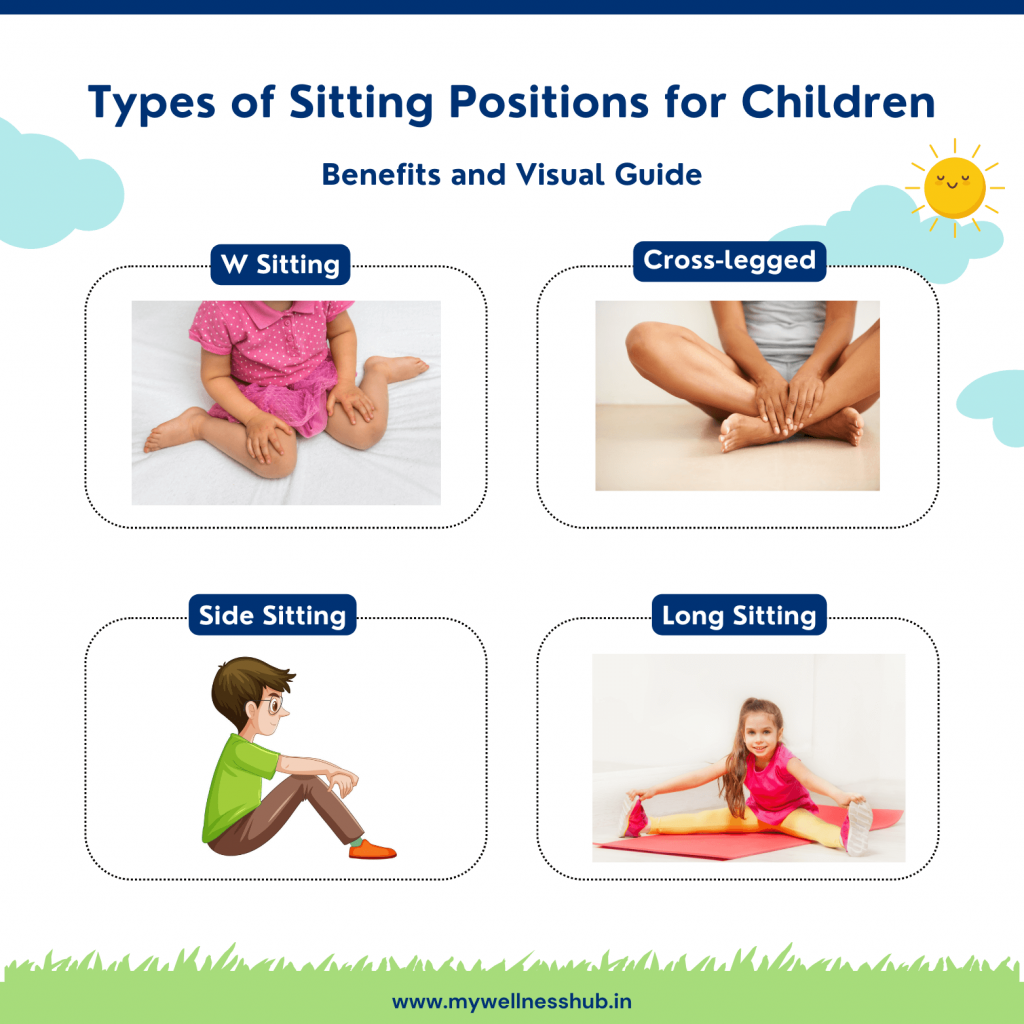
Comparison of Sitting Positions and Their Impact
| Position Name | Description | Benefits | Potential Issues |
|---|---|---|---|
| W Sitting | Sitting with knees bent and feet positioned to the sides, forming a W shape. | Provides stable base, no need for core support. | Can lead to hip dysplasia, tight leg muscles, and poor posture development. |
| Cross-legged (Criss-cross) | Sitting with legs crossed in front, commonly used in school settings. | Encourages good posture and core stability. | May be uncomfortable for long periods if core muscles are weak. |
| Side Sitting | Sitting with legs bent to one side. | Good for flexibility, easy to shift weight and turn. | Less stable than other positions, might not support extended play or focus. |
| Long Sitting | Sitting with legs straight out in front. | Helps stretch the hamstrings and reinforce lower back posture. | Requires good hamstring flexibility; may strain the back if done improperly. |
Also read: Understanding & Parenting an Autistic Child: Guide & Tips
When to Seek Professional Advice
Navigating the developmental stages of your child can be a joyful and sometimes complex journey. It’s normal for parents to have questions and sometimes concerns about their child’s posture and physical development, including their sitting habits. Knowing when to seek professional advice can be crucial in addressing potential issues early and effectively.
Identifying the Need for Professional Consultation:
- Persistent Discomfort or Limitations:
- If your child consistently shows discomfort or reluctance to change from the W sitting position, or if they struggle with mobility or pain during other activities, it might be time to consult a healthcare professional.
- Developmental Concerns:
- Should you observe delays in developmental milestones related to movement, balance, or coordination beyond what might be expected for their age, seeking advice from a pediatrician or physical therapist is advisable.
- Advice on Intervention:
- Sometimes, the signs aren’t clear, or you might just want to be sure you’re doing everything possible to support your child’s development. A professional can offer guidance on exercises, activities, or even further assessments if needed.
Support from Wellness Hub Experts:
At Wellness Hub, we understand that every child’s development is unique, and sometimes, you might seek guidance to ensure your child is on the right track. Our team of experts is dedicated to providing support that enriches your parenting journey and enhances your child’s growth and well-being. Whether you need straightforward advice on encouraging diverse sitting positions or detailed guidance on developmental milestones, our specialists are here to assist.
Conclusion
It’s important to keep an eye on how often your child sits in the W position. While it’s a common way for kids to sit, using it too much can lead to problems. Try to encourage your child to use different sitting positions. This helps their body grow strong and stay balanced.
If you ever worry about your child’s sitting habits or see them feeling uncomfortable, don’t hesitate to ask for advice from experts. At Wellness Hub, we have lots of resources and knowledgeable people ready to help. You can find more information and get in touch with us on our website. We’re here to support you in making sure your child has a healthy development.
Frequently Asked Questions:
1. What is W sitting in children?
W sitting is when a child sits on the floor with their knees bent and feet positioned to the sides, forming a W-like shape with their legs. This position is common among young children during play.
2. Is W sitting bad for children?
Occasional W sitting is normal and not necessarily harmful. However, if a child consistently prefers this position, it could lead to developmental issues such as hip dysplasia and poor core muscle development. It’s beneficial to encourage a variety of sitting positions.
3. What are the signs that W sitting is becoming a problem?
Be concerned if your child persistently uses the W sitting position, shows discomfort in other sitting positions, or develops physical symptoms like pigeon-toed walking or swayback posture.
4. How can I discourage my child from W sitting?
Encourage your child to switch to other sitting positions such as side sitting, tailor sitting, or long sitting. Engaging them in games and activities that promote movement can also help.
5. When should I consult a healthcare professional about my child’s sitting position?
Consult a pediatrician or physical therapist if your child consistently prefers W sitting despite encouragement to sit differently, shows discomfort, or if you notice any developmental delays or physical symptoms.
6. What resources does Wellness Hub offer for parents concerned about W sitting?
Wellness Hub provides a variety of resources on child development, including expert articles, guidance from pediatric professionals, and personalized consultations. Visit our Child Development Resources section for more information.
7. Can W sitting affect a child’s posture in the long term?
Yes, prolonged W sitting can impact a child’s posture over time. It may lead to tightness in the leg muscles and hips, affecting balance and coordination, and can contribute to developing a swayback posture or other alignment issues.
8. Are there specific exercises to help children who frequently W sit?
Yes, exercises that strengthen the core, improve flexibility, and promote overall muscle balance can be beneficial. Activities like swimming, yoga, and simple stretching exercises can help children develop stronger muscles and encourage more varied sitting positions.
9. What alternatives to floor sitting can help prevent W sitting?
Providing children with child-sized chairs or stools that encourage proper posture can be helpful. Alternatives like bean bags, cushions, and wobble chairs can also promote healthier sitting habits by allowing children to move freely and maintain balance without relying on the W sitting position.
10. How do I monitor my child’s sitting habits effectively?
Observing your child during different activities and noting their preferred sitting positions can give you insights into their habits. Encourage a variety of movements throughout the day and gently guide them to alternate positions if they default to W sitting frequently.
About the Author:
Anuradha Karanam
Speech-language pathologist (7+ years of experience)
Anuradha Karanam is a skilled speech-language pathologist with over 6 years of experience. Fluent in Tamil, Telugu, Hindi, and English, she specializes in parent counseling, speech sound disorders, fluency assessment, and speech-language evaluations. Anuradha excels at working with children with developmental disorders, offering creative and effective therapy programs. Currently at Wellness Hub, she holds a BASLP degree and is registered with the RCI (CRR No A85500). Her patience, ambition, and dedication make her a trusted expert in her field.
Book your Free Consultation Today
Parent/Caregiver Info:
Client’s Details:
* Error Message


